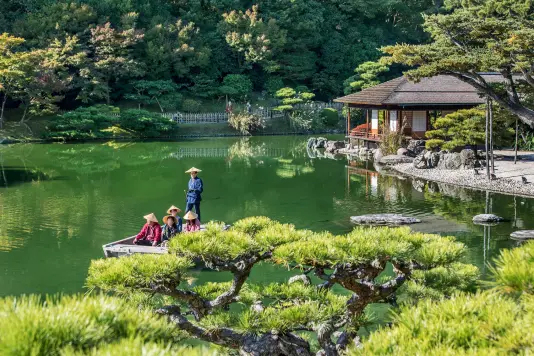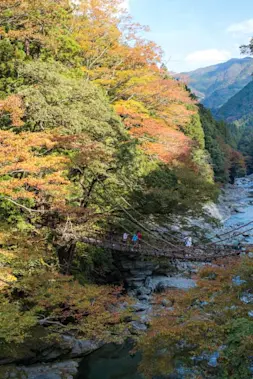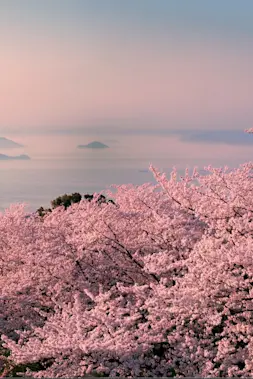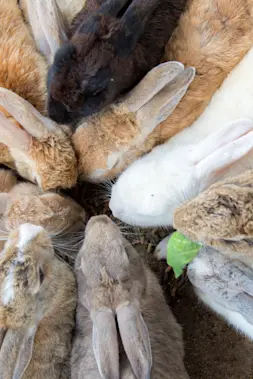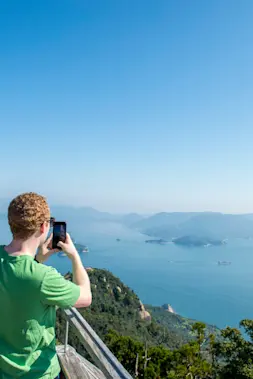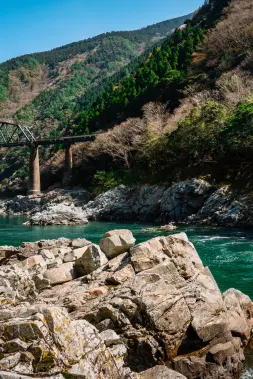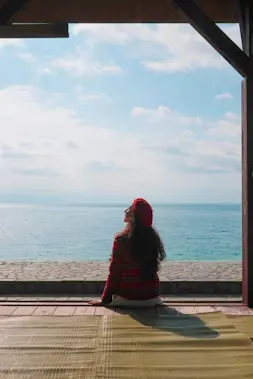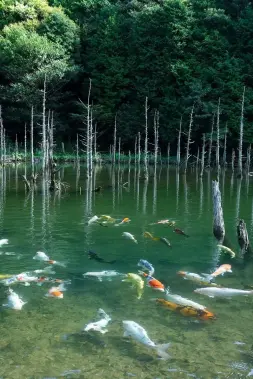Sea & Nature
Kankakei Gorge - An artwork 13 million years in the making

-
- DESTINATION NAME
- Kagawa
-
- RELATED TAGS
-
- LAST UPDATED
- 16 October, 2019
Kankakei Gorge, located in the center of Shodoshima Island, possesses the sort of evocative beauty that any master artist would gladly claim as their own. The stark cliffs and expressive rock formations provide a unique canvas that brings out the best of the stunning vegetation of the island.
As I made my way up through the narrow gorge in the cable, car my eyes kept grabbing onto successive peculiar rocky outcrops. I found the vegetation’s precarious dance of survival on the rock faces rich in abstract beauty. While it was fascinating to float by these distinctive cliff walls, the best scenery awaited at the end of the ride. Kankakei Gorge maintains a reputation as one of Japan’s most iconic views, and I was eager to take it all in.
Kankakei Gorge lies between the peaks of Mt. Hoshigajo and Utsukushi-no-hara Highland on the island of Shodoshima, the second largest island in the Seto Inland Sea. At 813 meters, not only is it the highest point on the island, it’s the highest point in the Seto Inland Sea, offering a spectacular vista running through the gorge, down to Uchinomi Bay, and out over the sea to the islands dotted around. On a good day you can see all the way to Shikoku, the smallest of Japan’s main islands.
While the quintessential Setouchi panorama makes for compelling viewing, lowering your gaze to fully take in the natural wonder of the gorge is what really makes this trip worthwhile.
With over a thousand varieties of plants, including numerous species only to be found on Shodoshima, the gorge is a must for those with a botanical streak. However, the stars of the show are undoubtedly the abundant Maple trees that turn the gorge into an explosion of red, yellow, and orange during the fall. Kankakei is a very worthy candidate if you had to pick only one place to see Japan’s famed Autumn colors.
Although it would be a shame to sell the other seasons short, as cherry blossoms in spring, deep greens in summer, and crisp air in winter all hold a special attraction for visitors. Kankakei Gorge is a four seasons destination. The all-round beauty of the gorge has seen it proclaimed as one of the “Top 3 Beautiful Gorges” in the nation, impressive enough to earn it a star in the Michelin Green Guide.
It was a beauty a long time in the making. Kankakei sits atop a piece of land that, some 15 million years ago, was occupied by a lake capping a volcano. Over the course of the next 2 million years or so, intense volcanic activity threw up massive amounts of magma and granite boulders, forming a mountainous terrain.
Add millions of years of wind and rain indiscriminately weathering the different types of rocks, and you have an amazingly diverse landscape which stands undeniably as one of mother nature’s most artistic creations. A beauty that has long been revered throughout the archipelago.
The Nihon Shoki, the earliest official history of Japan, written in the 8th century, specifically mentions Kankakei, describing one of the nation’s first emperors scaling the gorge unaided to worship the spectacular beauty of this place. Rich with a variety of plant life, the Emperor came not only to pay respects to the gods that created this marvel, but also to practice falconry. The ideal spot he chose to practice this art now bears the name Takatoritenbodai, meaning “the falconry spot.”
In modern times too, the gorge’s sacred beauty has been deeply treasured. Starting with local efforts to preserve its pristine sanctity during Japan’s first steps into the modern world. Eventually, in 1934 the Kankakei Gorge became the centerpiece of the Setonaikai National Park, the first place within Japan’s enormously rich natural environment dedicated as a national park.
The quickest and easiest means to enjoy the beauty of the gorge is to ride the modern cable car to the main viewing points surrounding the upper cable car station. A short but stunning ride will have you gliding straight through the middle of the most spectacular parts of the gorge. For those with the energy, taking one of the hiking trails up the mountain also provides a rewarding way to make your way to the top.
The cable car offers a unique perspective, but going by foot lets you stop and take in the marvels of nature such as Sekimon (the stone bridge), the balancing Matsutake-iwa (Matsutake mushroom) rock, as well as pay your respects at the numerous points of religious significance lining the journey to the summit.
After enjoying the sights and taking my fill of photos from the three main viewpoints, I decided to try my arm at kawaranage, the simple yet challenging game of throwing small clay discs through a hoop suspended at some distance from the lookout. Legend has it that if your throw makes it through the middle of the hoop your wish will be granted. Slightly embarrassing, but I never came close. Though luckily enough I wasn’t relying on accuracy to make my wish come true, all I really wanted was some lunch, and the good folks at Kankakei had that covered too.
Photographs by Steve Jarvis & Kankakei Text by Steve Jarvis
RELATED DESTINATION
Kagawa
This is an area with many islands, including Naoshima and Teshima, which are famous for art. It also is home to the tasteful Ritsurin Garden. Kagawa is also famous for its Sanuki udon, which is so famous it attracts tourists from throughout Japan. The prefecture is even sometimes referred to as “Udon Prefecture.” [Photo : “Red Pumpkin” ©Yayoi Kusama,2006 Naoshima Miyanoura Port Square | Photographer: Daisuke Aochi]
